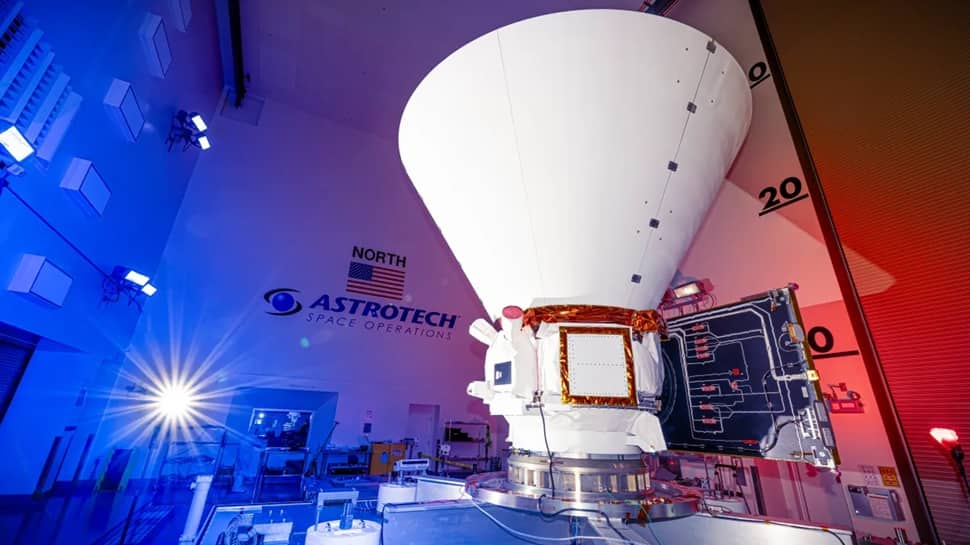Melbourne: NASA will soon launch a new telescope which it says will create the “most colourful” map of the cosmos ever made. The SPHEREx telescope is relatively small but will provide a humongous amount of knowledge in its short two-year mission. It is an infrared telescope designed to take spectroscopic images – ones that measure individual wavelengths of light from a source. By doing this it will be able to tell us about the formation of the universe, the growth of all galaxies across cosmic history, and the location of water and life-forming molecules in our own galaxy.
In short, the mission – which is scheduled for launch on February 27, all things going well – will help us understand how the universe came to be, and why life exists inside it.
A massive leap forward
Everything in the universe, including you and the objects around you, emits light in many different colours. Our eyes split all that light into three bands – the brilliant greens of trees, blues of the sky and reds of a sunset – to synthesise a specific image. But SPHEREx – short for Spectro-Photometer for the History of the Universe, Epoch of Reionization and Ices Explorer – will divide light from everything in the sky into 96 bands. This is a massive leap forward. It will cover the entire sky and offer new insights into the chemistry and physics of objects in the universe.
The mission will complement the work being done by other infrared telescopes in space, such as the James Webb Space Telescope and Hubble Space Telescope. Both of these telescopes are designed to make high-resolution measurements of the faintest objects in the universe, which means they only study a tiny part of the sky at any given time. For example, the sky is more than 15 million times larger than what the James Webb Space Telescope can observe at once.
In its entire mission the James Webb Space Telescope could not map out the whole sky the way SPHEREx will do in only a few months. SPHEREx will take will take spectroscopic images of 1 billion galaxies, 100 million stars, and 10,000 asteroids. It will answer questions that require a view of the entire sky, which are missed out by the biggest telescopes that chase the highest resolution.
Measuring inflation
The first aim of SPHEREx is to measure what astronomers call cosmic inflation. This refers to the rapid expansion of the universe immediately after the Big Bang. The physical processes that drove cosmic inflation remain poorly understood. Revealing more information about inflation is possibly the most important research area of cosmology.
Inflation happened everywhere in the universe. To study it astronomers need to map the entire sky. SPHEREx is ideal for studying this huge mystery that is fundamental to our cosmos. SPHEREx will use the spectroscopic images to measure the 3D positions of about a billion galaxies across cosmic history. Astronomers will then create a picture of the cosmos not just in position but in time.
This, plus a lot of statistics and mathematics, will let the SPHEREx team test different theories of inflation.
Location of life-bearing molecules
Moving much closer to home, SPHEREx aims to identify water- and life-bearing molecules (known as biogenic molecules) in the clouds of gas in our galaxy, the Milky Way. In the coldest parts of our galaxy, the molecules that create life (such as water, carbon dioxide and methanol) are trapped in icy particles. Those icy biogenic molecules have to travel from the cold gas in the galaxy onto planets so life can come to be.
Despite years of study, this process remains a huge mystery. To answer this fundamental question about human existence, we need to know where all those molecules are. What SPHEREx will provide is a complete census of the icy biogenic molecules in our surrounding galaxy. Icy biogenic molecules have distinct features in the infrared spectrum, where SPHEREx operates.
By mapping the entire sky, SPHEREx will pinpoint where these molecules are, not only in our galaxy but also in nearby systems. Once we know where they all are, we can determine the necessary conditions to form biogenic molecules in space. In turn, this can tell us about a crucial step in how life came to be.
Currently 200 spectra have been taken on biogenic molecules in space. We expect the James Webb Space Telescope will obtain a few thousand such measurements. SPHEREx will generate 8 million new spectroscopic images of life-bearing molecules. This will revolutionise our understanding.
Mapping the whole sky enables astronomers to identify promising regions for life and gather large-scale data to separate meaningful patterns from anomalies, making this mission a transformative step in the search for life beyond Earth,

